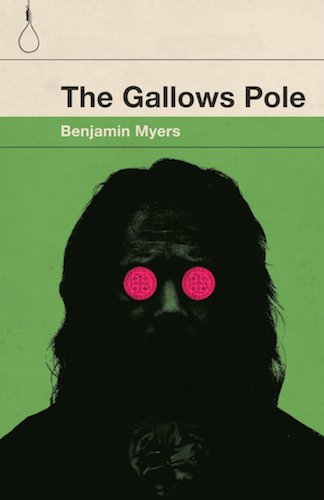
Despite my reading almost no fiction these days, there was a pretty good chance I was going to enjoy Benjamin Myers’ novel based on the true story of a notorious gang of 18th-century money counterfeiters: one of my study windows looks out across the upper Calder Valley towards Cragg Vale, where much of this novel is set; the other looks across Hebden Valley to Heptonstall Church, where the novel’s protagonist is buried.
The Gallows Pole tells the story of the Cragg Vale Coiners, an organised gang of criminals based in and around the upper Calder Valley, in what was then a remote part of England where the law held little sway. The novel is set against the backdrop of imminent industrialisation, with the threatened arrival of mills, the Rochdale Canal, and the detested turnpike (still known as ‘New Road’ where it passes through nearby Hebden Bridge).
Locally, the coiners still have something of a reputation as a band of merrie men whose debasement of the king’s coin helped feed the poor. In reality, their leader, the self-styled ‘King’ David Hartley, was far less Robin Hood than Tony Soprano: the Cragg Vale Coiners were a bunch of lawless, murderous thugs, with, as events were to prove, little to be said for them in terms of group loyalty.
All great anti-heroes require a would-be nemesis. In Hartley’s case, this came in the form of William Deighton, an excise officer charged with putting an end to the counterfeiting operation. What follows is a story of intrigue, betrayal, murder, and revenge.
The Gallows Pole is written in two narrative voices, both of which work remarkably well. The main story is written in third-person standard English with a few stylish twists to lend period authenticity. Direct speech is incorporated into the text without quotation marks, and people are always referred to by their full names, both of which devices just seem right somehow. When the coiners are gathered, the formal listing of those present, as if for the minutes, gives an appropriate Uncle Tom Cobley and all period feel.
The second narrator’s voice is that of David Hartley himself. These very short, italicised diary extracts, interspersed throughout the main narrative, are written without punctuation and are littered with contemporary slang and phonetic spellings. Usually, this sort of device annoys the hell out of me, but it works brilliantly in The Gallows Pole. If King David Hartley really had kept a diary—and don’t we all wish he had?—it surely would have read like this. Myers must have had immense fun (and given himself some severe headaches) capturing Hartley’s ‘authentic’ voice. Here is a typical example, imparting some useful advice on man-management:
Now lissen now for I tell you sum thin importent sum thin secret now When a dug misbyhayves you ponk that dug on its neb and when it misby hayves again you rub its phyz in scat and if still that dug misbyhayves a third tyme then you are doon sum thin rong so then you beet it until sum thin goes in its ays like the last ember of a dyin fyre and the spirit of the creechure will be yors and then yool have no trubble from that dug and that dug will give his lyf for you and now it nose its playce that yule have mayde for it And it will feer you an love you an protec you An that is how you run a ragged crew of desprit men That is how you run a gang that sum corl the Turvin Clippers and that uthers corl the Cragg Vayle Coiners.
Finally, I should say a word about Myers’ descriptions of the local landscape. It’s an area I know and love very much indeed—as, judging from his evocative descriptions, does Myers. I tend to be parochial in the extreme in my local walks. Reading The Gallows Pole made me want to begin roaming farther afield, exploring the upper Calder Valley in more depth, maybe even wandering into the godforsaken craggy vale that was once the haunt of a ragged crew of desprit men.
- Buy this book from Bookshop.org (UK) and help tax-paying, independent bookshops.
- Buy this book from Amazon.co.uk
- Buy this book from Amazon.com
Disclosure: At the time of writing this review, I have met local author Ben Myers on two occasions. We now follow each other on various social media.
Leave a Reply